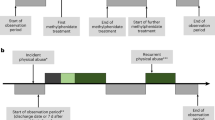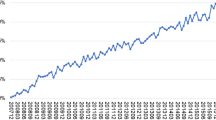Abstract
How do ‘stimulants’ reduce hyperactivity in children and adults? How can drugs which raise extracellular dopamine result in psychomotor slowing of hyperactive children when dopamine is known to enhance motor activity, such as in Parkinson's disease? These apparent paradoxes are the focus of this brief review on the mechanism of action of stimulant medications used in the treatment of children, and of an increasing number of adults who meet diagnostic criteria for attention deficit hyperactivity disorder.
This is a preview of subscription content, access via your institution
Access options
Subscribe to this journal
Receive 12 print issues and online access
$259.00 per year
only $21.58 per issue
Buy this article
- Purchase on Springer Link
- Instant access to full article PDF
Prices may be subject to local taxes which are calculated during checkout
Similar content being viewed by others
Author information
Authors and Affiliations
Rights and permissions
About this article
Cite this article
Seeman, P., Madras, B. Anti-hyperactivity medication: methylphenidate and amphetamine. Mol Psychiatry 3, 386–396 (1998). https://doi.org/10.1038/sj.mp.4000421
Received:
Revised:
Accepted:
Published:
Issue Date:
DOI: https://doi.org/10.1038/sj.mp.4000421
Keywords
This article is cited by
-
Molecular Characterisation of the Mechanism of Action of Stimulant Drugs Lisdexamfetamine and Methylphenidate on ADHD Neurobiology: A Review
Neurology and Therapy (2022)
-
DRD4 48 bp multiallelic variants as age-population-specific biomarkers in attention-deficit/hyperactivity disorder
Translational Psychiatry (2020)
-
Effects of methylphenidate on the aggressive behavior, serotonin and dopamine levels, and dopamine-related gene transcription in brain of male Nile tilapia (Oreochromis niloticus)
Fish Physiology and Biochemistry (2019)
-
Using Ca2+-channel biosensors to profile amphetamines and cathinones at monoamine transporters: electro-engineering cells to detect potential new psychoactive substances
Psychopharmacology (2019)
-
Randomized Placebo-Controlled Trial of Methylphenidate or Galantamine for Persistent Emotional and Cognitive Symptoms Associated with PTSD and/or Traumatic Brain Injury
Neuropsychopharmacology (2016)



